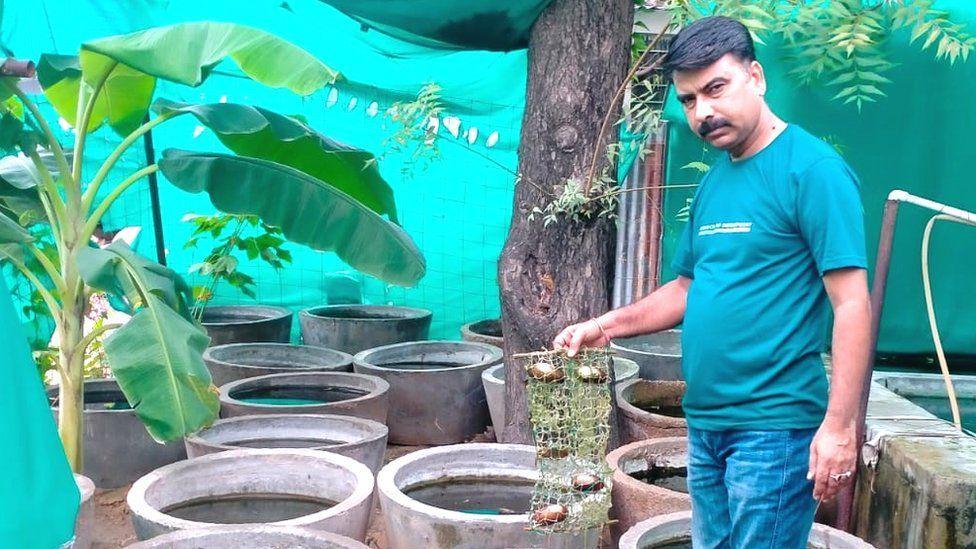Africa-Press – Mauritius. In 2016 Narendra Garwa was facing a desperate financial situation. His small book store in the village of Renwal, Rajasthan, was running at a loss. With a family to support and little education, he searched the internet for other money-making ideas.
He had some success growing vegetables in plastic bottles, but then came across a potentially more profitable crop – pearls. “Rajasthan is a dry area with water issues.
It was a challenge to think of growing pearls with limited water but I decided to try,” he says. Pearls are formed when a mollusc reacts to an irritant in its protective membrane.
The mollusc deposits layers of aragonite and conchiolin, which together form nacre, also know as mother-of-pearl. In the wild, pearl formation is rare so most pearls sold these days are from farmed molluscs, usually oysters or freshwater mussel
To spur the mollusc to form a pearl, an irritant is artificially introduced into the creature. However, it is a delicate process and the mussels or oysters must be carefully handled, as Mr Garwa found.
“My first attempt was a disaster,” he admits. Of the 500 mussels he purchased, only 35 survived. Mr Garwa had travelled to Kerala to buy the mussels – a journey of 1,700 miles involving a 36-hour train journey.
He also used his savings and borrowed money to come up with the 16,000 rupees (£170; $200) needed to buy the molluscs. In addition, Mr Garwa had dug a 10ft by 10ft pound in his back garden to keep the creatures in.
Despite the setback, he did not give up. Instead, he took a five-day course in pearl farming. “Growing an oyster is like bringing up a baby,” he says.
“Monitoring the the water throughout the growth period is crucial to achieving high quality and volume of produce.
” Now he has a 40ft by 50ft pond, which he treats with multivitamins and alum which maintains the correct pH level required for growth.
The survival rate of his mussels has risen from 30% to more than 70% since becoming more familiar with the process. Mr Garwa expects to produce around 3,000 pearls this year, which he can sell for between 400 and 900 rupees (£4-£10; $5-$11).
The Indian government has been encouraging pearl fishing as part of its Blue Revolution, a plan to modernise the nation’s fishing industry. Under the scheme the government pays for half the cost of setting up a pond for pearl fishing, and so far the Department for Fisheries has given financial support to 232 pearl farming ponds.
“Pearl farming is one of the most lucrative aquaculture businesses and the government is encouraging farmers to take up this farming,” says Jujjavarapu Balaji, Joint Secretary of Marine Fisheries.
Not everyone is impressed with this wave of pearl farming activity. Critics include Gunjan Shah, who is the fifth generation of his family to be in the pearl trading business.
“The culture of pearl farming has increased in India but I think the pearls grown in every nook and corner are not of very good quality” says the owner of Babla Enterprises, based in Mumbai.
For More News And Analysis About Mauritius Follow Africa-Press







